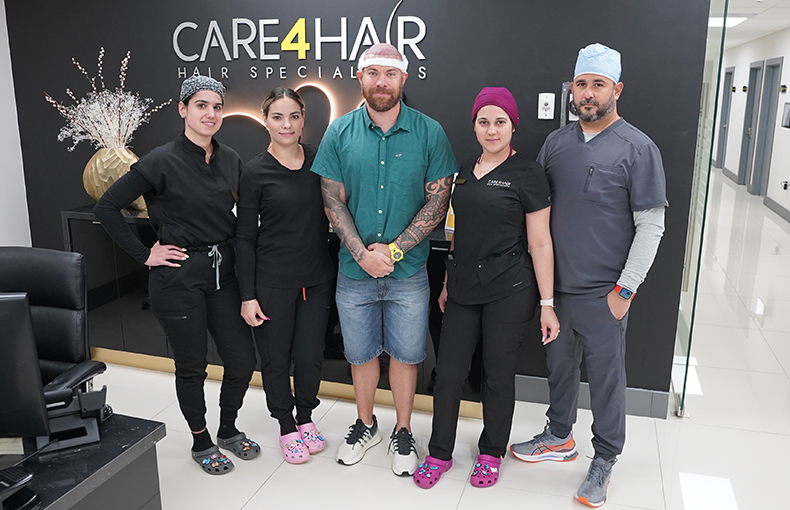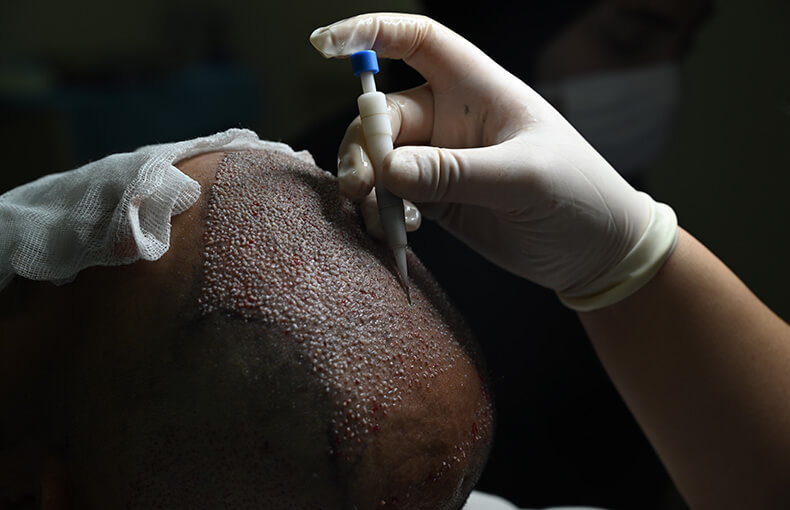
Do Hair Transplants Leave Scars
The technology around hair transplants has come a very long way since hair plugs. Today, new techniques and technologies have made hair transplant surgery more painless and comfortable than it’s ever been. They have also produced stunning and increasingly more natural-looking results.
Nevertheless, like any surgery, hair transplants involve skin incisions, and these tend to leave behind scars as the skin heals. Furthermore, the type of scarring you will experience will depend on the technique you and your surgeon have chosen to achieve your aesthetic ends. This, more than anything, will be the determinant of healthy scarring on your scalp.
Today, most hair transplants are performed following two techniques: Follicular Unit Transplantation (FUT) and Follicular Unit Extraction (FUE).
FUT
FUT is a transplant technique in which the surgeon removes a strip of your scalp, usually in the back, which contains the donor hair follicles. The surgeon will then suture the wound, leaving a scar. The size of this scar will, of course, be dependent on the number of hair follicles you need for your procedure. The incisions could span from ear to ear or be as short as 5 to 10 centimeters in length. The hair follicles are removed from the strip, and these are placed inside earlier-made incisions in the recipient region of the scalp.
The procedure was once very popular since it was a more natural, better-looking improvement from the hair plugs used in the industry. Hair plugs tended to be visible when you pulled your hair back, and, aesthetically, they gave the impression of being “doll”-like hair. FUT was also favored by women whose long hair could easily cover the scar on the scalp left by FUT.
Nevertheless, because FUT requires a rather intensive extraction of tissue, many people interested in hair transplantation today are more and more opting for the more modern FUE. As we’ll explain below, FUE is far less invasive. Because of its particular extraction method, it leaves less noticeable scarring.
FUE
FUE is a procedure in which hair follicles are individually extracted from a donor region of the scalp like the back of the head using a micro-punch implement. Unlike FUT, FUE does not require the surgeon to make large tissue extractions in order to graft the follicles. With the same micro-punch tool, the surgeon will inject the hair follicles back into small incisions in the recipient area of the scalp.
Because the hair follicles are extracted using this punch tool, the scars are small and localized. The incisions in the recipient area are also very small and very difficult to notice. Thus, the recovery after FUE is also far less demanding than after FUT.
Concealing the Scars
There are three ways for you to diminish the presence of scars: scalp pigmentation, tricopigmentation, and laser treatment.
Scalp pigmentation: Scalp pigmentation is when the pigment is injected into the scalp to color it. It can be considered a type of tattoo whose purpose is to give the appearance of a full head of hair. Some people, in fact, sometimes use scalp pigmentation instead of undergoing a hair transplant to supplement hair-thin regions of the scalp. With regards to scarring, scalp pigmentation has also been seen to diminish the visibility of scars. Its only drawback is that the pigment fades more slowly than the hair whitens. If a person pigments their scalp as their hair is graying, the hair might whiten before the pigmentation in the scalp has faded, making for a rather unsightly appearance.
Tricopigmentation: Tricopigmentation, like regular scalp pigmentation, colors the skin, but the ink is injected in a shallower part of the skin than in regular pigmentation. As a result, the pigmentation is temporary. It can last from about 6 months to 3 years. As with scalp pigmentation, tricopigmentation can diminish the visibility of scars.
Laser Treatment: Laser treatment has long been incorporated in post-surgical treatments to diminish the visibility of scars. The laser burns the top layers of scar tissue to reduce its height and size.
Because laser treatment is minimally invasive, you can pair it with the two pigmentation procedures above. Laser treatment has the added benefit that it can stimulate the production of collagen, which allows for greater skin elasticity, healing, and suppleness, thereby rejuvenating the skin.
The success of your hair procedure and subsequent scarring depends on the excellence of your surgeon. Don’t hesitate to ask your Care4Hair surgeon for answers to your questions regarding scarring. Overall, while some scarring will occur naturally, the surgeons at Care4Hair will diligently work with you to avoid




















